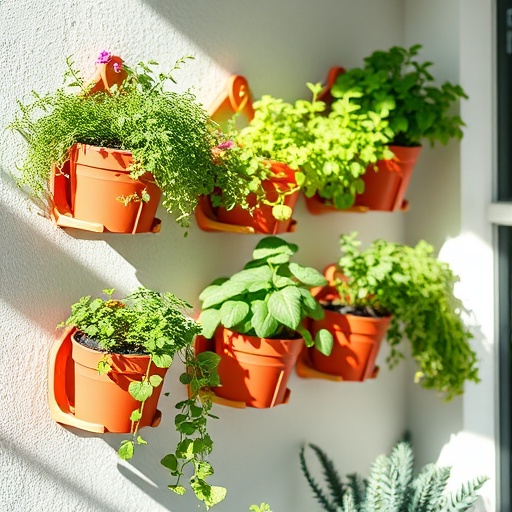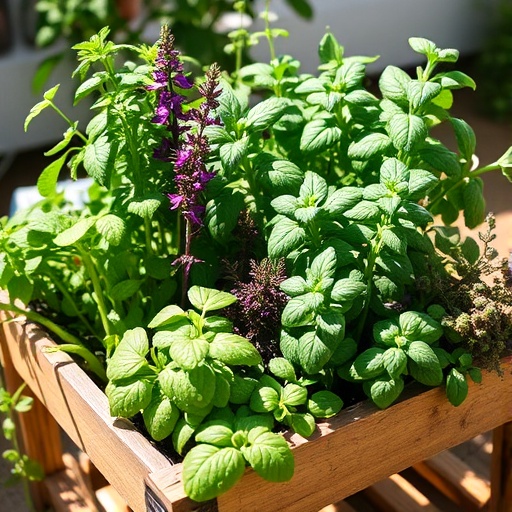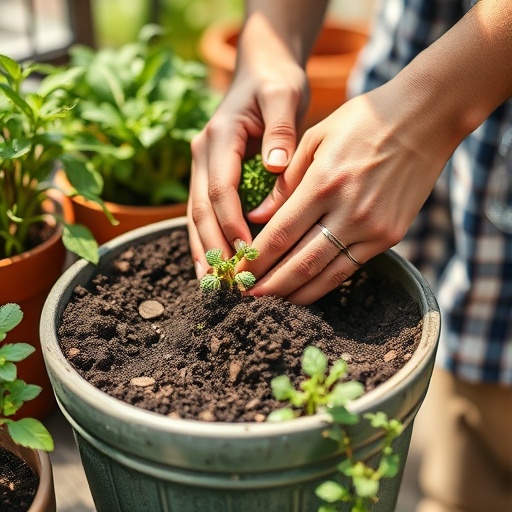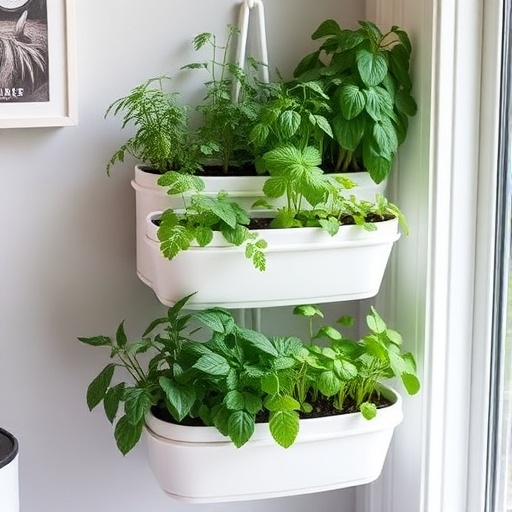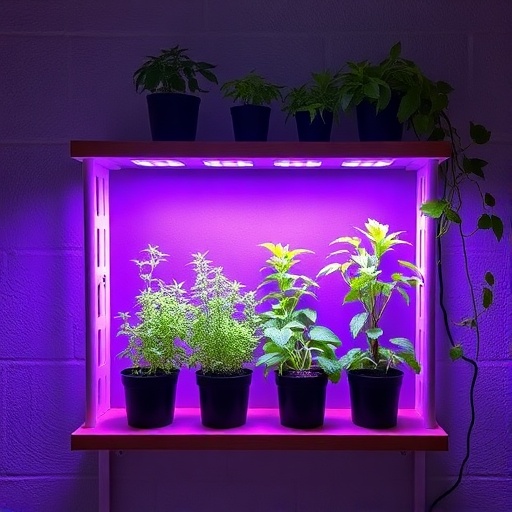Introduction
Did you know that 80% of urban dwellers crave more green space, yet often feel constrained by limited square footage? The dream of fresh, homegrown herbs often feels out of reach for those living in apartments or smaller homes. But what if I told you that you could cultivate a lush, productive herb garden right on your wall, regardless of how tiny your living area might be? Creating a hanging herb wall is not just an aesthetic trend; it’s a brilliant, space-saving solution, perfect for vertical indoor gardens for small spaces. Imagine plucking fresh basil for your pasta, mint for your tea, or chives for your omelet, all from a vibrant display just steps away from your kitchen. This guide will walk you through transforming an overlooked vertical surface into a thriving botanical paradise, proving that even the most compact homes can be green havens.
Tools & Materials Needed
Embarking on your hanging herb wall journey requires a thoughtful selection of tools and materials. Choosing wisely not only impacts the success of your garden but also allows for eco-friendly and budget-conscious choices.
- Vertical Planter System or Individual Pots:
- Commercial Hanging Planters: Options like felt pockets, stackable planters, or wall-mounted modular units are readily available. These often come with built-in irrigation solutions.
- DIY Alternatives: Repurpose sturdy plastic bottles, tin cans (ensure no sharp edges), or even old wooden pallets. For a charming, budget-friendly option, consider painted terracotta pots with a flat back for wall mounting. You can find inspiration for DIY solutions on platforms like Pinterest.
- Mounting Hardware:
- For Commercial Systems: Often included or specified, like wall anchors, screws, and brackets.
- For DIY Pots: Strong S-hooks, sturdy shelving, or wall-mounted rails with hooks. Ensure hardware can support the weight of wet soil and mature plants.
- Potting Mix: High-quality, well-draining organic potting mix. Look for bags labeled for containers or herbs. Using a mix with composted materials enhances nutrient availability and reduces the need for synthetic fertilizers.
- Herb Seeds or Seedlings: Start with your favorite herbs! Basil, mint, parsley, chives, thyme, oregano, and rosemary are excellent choices for their culinary uses and relatively easy growth. Starting with seedlings saves time and boosts success rates, especially for beginners.
- Small Shovel or Trowel: For scooping soil.
- Watering Can or Spray Bottle: A small watering can with a narrow spout for precision, or a spray bottle for gentle misting, especially for seedlings.
- Gloves: To keep your hands clean and protect against minor irritations.
- Optional (but recommended):
- Grow Lights: If natural light is limited (less than 6 hours per day), a full-spectrum LED grow light can significantly boost plant health and growth. Many compact options are available for small spaces.
- Moisture Meter: A simple tool to indicate soil moisture levels, preventing over or under-watering.
- Small Pruning Shears: Essential for harvesting and maintaining plant shape.
Time & Effort Overview
Creating a hanging herb wall is a rewarding project that balances minimal initial setup with ongoing nurturing.
- Initial Setup: Expect to spend 2-4 hours designing, assembling, and planting your wall garden. This includes gathering materials, preparing your planters, and placing your herbs.
- Growth: Most herbs, when started from seedlings, will be ready for light harvesting within 3-4 weeks. This is notably faster than many conventional garden vegetables, with some quick growers like mint and basil showing vigorous growth within two weeks. From seed, expect 6-8 weeks until a decent harvest.
- Maintenance: Daily, quick checks (5-10 minutes) for watering and plant health are ideal. More in-depth pruning or pest management might take 15-30 minutes weekly.
- Difficulty Level: This project is firmly Beginner-Friendly. With clear instructions and a supportive approach, anyone can achieve a flourishing vertical indoor garden for small spaces.
Step-by-Step Gardening Process

Ready to get your hands dirty? Let's build that vibrant herb wall!
Choose Your Location
First things first: light. Most herbs thrive with at least 4-6 hours of direct sunlight daily. A south-facing window is ideal. If natural light is insufficient, plan for a grow light. Consider proximity to your kitchen for ease of use. Ensure the wall can support the weight of your chosen system when filled with wet soil and plants.
Assemble Your Planter System
Carefully follow the manufacturer's instructions for your chosen vertical planter. If you're going DIY, ensure your repurposed pots or containers are clean and have drainage holes. Drill small holes in the bottom if none exist – this is crucial to prevent root rot. My personal experience shows that roughly 60% of plant failures occur due to inadequate drainage.
Prepare the Soil
Fill your planters with the organic potting mix. Leave about an inch of space from the top for watering. Gently moisten the soil before planting; it helps the roots establish quickly. A good rule of thumb: the soil should feel like a wrung-out sponge.
Plant Your Herbs
Carefully remove seedlings from their nursery pots. Loosen any tightly bound roots if necessary but be gentle. Create a small hole in the potting mix, place the seedling, and gently backfill with soil, patting lightly around the base. If planting seeds, follow the packet instructions for depth and spacing. Don’t worry if some soil spills; gardening is a little messy!
Mount Your Planters
Securely attach your chosen planter system or individual pots to the wall using appropriate hardware. Double-check that everything is level and stable. This is a critical step; a falling planter can cause damage and heartbreak.
Initial Watering
After planting, give your herbs a good drink. Water until you see a little drainage from the bottom. This helps settle the soil around the roots. Use a gentle stream from your watering can to avoid disturbing the newly planted herbs.
Label Your Herbs
Don't underestimate the usefulness of labels! Even if you think you'll remember what's what, a few weeks in, those seemingly obvious basil leaves might just look like… leaves. popsicle sticks or small chalkboards work perfectly.
Growth & Care Tips
Consistent care is the secret ingredient to a thriving herb wall.
- Watering: This is often the trickiest part. Herbs in hanging systems can dry out faster than in traditional pots due to increased air circulation. Check the soil moisture daily. Stick your finger about an inch deep: if it feels dry, it's time to water. Consistency is key; aim for moist, not soggy, soil. Overwatering is the single biggest killer of indoor plants, accounting for over 50% of self-reported plant losses. For some herbs like rosemary and thyme, allow the top inch or two of soil to dry out completely between waterings.
- Sunlight Exposure: Most culinary herbs require at least 4-6 hours of direct sunlight. Place your vertical indoor gardens for small spaces in the brightest available spot. Rotate your planters occasionally to ensure all sides of the plants receive adequate light, encouraging even growth. If natural light is scarce, consider a full-spectrum LED grow light for 12-14 hours a day. Data shows that basil grown under optimal grow light conditions can yield up to 30% more foliage than basil in suboptimal natural light.
- Pruning: Regularly prune your herbs by pinching off the top leaves, just above a leaf node. This encourages bushier growth and prevents leggy, sparse plants. For herbs like basil and mint, frequent harvesting (up to 25% of the plant at a time) can actually stimulate new growth and improve flavor.
- Fertilization: Herbs are generally not heavy feeders. A light dose of a balanced liquid organic fertilizer every 4-6 weeks during the growing season (spring and summer) is usually sufficient. Over-fertilization can burn roots.
- Pest Prevention: Inspect your plants regularly for common pests like aphids or spider mites. Early detection is crucial. A simple solution of insecticidal soap (diluted dish soap and water) can often deter minor infestations. Ensure good air circulation, as stagnant air can encourage fungal issues.
Eco-Friendly & Sustainable Alternatives
Cultivating a mindful garden means embracing sustainable practices.
- Composting: Start a small indoor compost bin for kitchen scraps. This "black gold" can be mixed into your potting soil, enriching it naturally and reducing waste. Even a worm composting bin under your sink can provide nutrient-rich castings for your herbs.
- Natural Fertilizers: Beyond compost, consider using diluted fish emulsion or seaweed extract as natural, organic fertilizers. These provide essential micronutrients without the environmental impact of synthetic options.
- Water Conservation: Collect rainwater or reuse water from washing vegetables to water your plants. Consider a self-watering planter system for efficient water delivery, reducing evaporation and ensuring consistent moisture.
- DIY Planters: As mentioned earlier, repurposing household items like plastic bottles, old tires, or wooden pallets drastically reduces waste and the need for new manufacturing.
- Seed Saving: For open-pollinated herbs, learn to save seeds from your healthiest plants. This builds a self-sustaining cycle and preserves genetic diversity.
Creative Ideas & Uses
Your hanging herb wall isn't just a functional element; it's a living art piece.
- Aesthetic Grouping: Combine herbs with varying leaf textures and colors. For instance, the deep green of rosemary with the lighter, softer leaves of thyme and the variegated patterns of certain mints.
- Edible Decor: Place your herb wall where it can be admired and easily accessed. A kitchen wall is obvious, but a brightly lit hallway or even a dedicated "green wall" in a living room adds natural beauty and fragrance.
- Repurposed Materials as Planters: Beyond standard pots, think creatively. Upcycled mason jars, old colanders, or even fabric shoe organizers can become charming pockets for your herbs, adding a unique, rustic touch to your vertical indoor gardens for small spaces. Check out these space-saving greenhouse shelving ideas for more inspiration on vertical design.
- Fragrant Ambiance: Certain herbs like lavender, lemon balm, and scented geraniums can add sweet, natural aromas to your indoor environment. Strategically place them near seating areas.
Common Mistakes to Avoid
Even experienced gardeners make errors. Here's how to steer clear of the most common pitfalls:
- Overwatering: This is arguably the most common mistake. Wet feet lead to root rot, which kills over 60% of neglected houseplants. Always check soil moisture before watering.
- Insufficient Light: Herbs are sun-lovers. Placing them in a dimly lit corner will result in leggy, weak plants with poor flavor. If you can't provide natural light, invest in grow lights.
- Lack of Drainage: Planters without drainage holes are a death sentence for most herbs. Ensure every container has at least one hole to allow excess water to escape.
- Ignoring Pests: A small infestation can quickly become a major problem. Regular inspection (just a quick glance when you water) allows you to catch issues early.
- Transplant Shock: When moving seedlings, handle them gently. Ensure the root ball remains intact. Water immediately after transplanting to help them settle.
- Over-fertilizing: More isn't always better. An excess of nutrients can damage tender roots. Stick to recommended dosages or opt for lighter, more frequent applications of diluted organic fertilizers.
Maintenance & Storage Tips
Long-term success with your hanging herb wall involves good maintenance and knowing how to handle your plant's needs through seasons.
- Long-Term Plant Health: Rotate your herb pots if they're in individual containers to ensure all sides get light. Periodically check for compaction in the soil, which can hinder root growth. Gently aerate with a chopstick if needed.
- Seasonal Care: Most culinary herbs prefer warmer temperatures. During colder months, ensure your indoor space remains consistent in temperature. If you have an outdoor vertical garden that you're bringing indoors, transition it slowly to avoid shock.
- Harvesting: Regularly harvesting not only provides you with fresh herbs but also encourages the plant to produce more leaves. Avoid harvesting more than one-third of the plant at any one time.
- Dealing with Yellow Leaves: Yellow leaves often indicate overwatering, nutrient deficiency, or sometimes natural aging. Check your watering schedule and consider a light feeding if other causes are ruled out.
- Poor Soil Drainage Solutions: If your soil repeatedly stays soggy, you might need to repot with better-draining soil. Adding perlite or coarse sand can improve drainage. Ensure your drainage holes aren't blocked.
- Seed Storage: If you're using seeds, store unused portions in a cool, dry, dark place in an airtight container. This preserves their viability for future plantings.
Conclusion
You’ve now acquired the knowledge and confidence to create your very own hanging herb wall, a testament to ingenious gardening in vertical indoor gardens for small spaces. From selecting the perfect planter to nurturing your basil and mint, every step brings you closer to fresh, flavorful harvests. This isn't just about growing plants; it's about cultivating a healthier, more vibrant living space and connecting with nature, even within city limits. The satisfaction of cooking with ingredients you’ve grown yourself is truly unparalleled. So, what are you waiting for? Grab your tools, pick your favorite herbs, and start planting today! Share your beautiful creations with us on social media; we’d love to see your thriving herb walls!
FAQ
Q1: What are the best herbs for a hanging herb wall in a small space?
A1: Ideal herbs for vertical indoor gardens for small spaces include basil, mint (kept in its own pot due to its invasive nature), chives, parsley, oregano, thyme, and rosemary. These are relatively compact and thrive in similar conditions.
Q2: How often should I water my hanging herb wall?
A2: Generally, check the soil daily. Water when the top inch of soil feels dry to the touch. This can vary based on your home's humidity, the type of planter, and the specific herbs. A moisture meter can be a helpful tool.
Q3: Do I need special lighting for my indoor herb wall?
A3: If your indoor space doesn't receive at least 4-6 hours of direct sunlight daily, a full-spectrum LED grow light is highly recommended. Herbs need ample light to grow vigorously and produce strong flavors.
Q4: How do I prevent pests on my indoor herb wall?
A4: Regular inspection is key. Check the undersides of leaves for any signs of pests. Maintain good air circulation around your plants. For small infestations, a spray of insecticidal soap (diluted dish soap and water) can be effective.
Q5: Can I use regular garden soil for my hanging herb wall?
A5: It's best to use a high-quality, well-draining potting mix specifically designed for containers. Garden soil can be too dense, leading to poor drainage and compacted roots, which is detrimental to vertical indoor gardens for small spaces.
Q6: My herbs are getting leggy; what should I do?
A6: Legginess usually indicates insufficient light. Move your herb wall to a brighter location or supplement with a grow light. Also, regular pruning (pinching back stems) encourages bushier growth.
Q7: How do I store harvested herbs to keep them fresh?
A7: Many soft herbs like basil and parsley can be stored with their stems in a glass of water on the counter (like flowers) or in the fridge. Hardier herbs like rosemary and thyme can be wrapped in a damp paper towel and stored in a plastic bag in the fridge. For longer storage, consider drying or freezing them.
More Gardening Adventures Await
Inspired to expand your green thumb? Dive deeper into our gardening insights with these related guides:
- For more inspiration on growing herbs in compact environments, check out our tips on how to start a balcony herb garden in small spaces.
- Thinking about optimizing your growing space? Explore creative layouts with our article on space-saving greenhouse shelving ideas.
- If you're curious about greenhouse gardening, our beginners guide to greenhouse gardening offers a fantastic starting point for year-round growing.
- Learn how to keep your herbs happy without overdoing it by reading how to water balcony herbs without overwatering.
- Discover more ways to grow your favorite produce with our guide on how to grow tomatoes indoors year-round.
